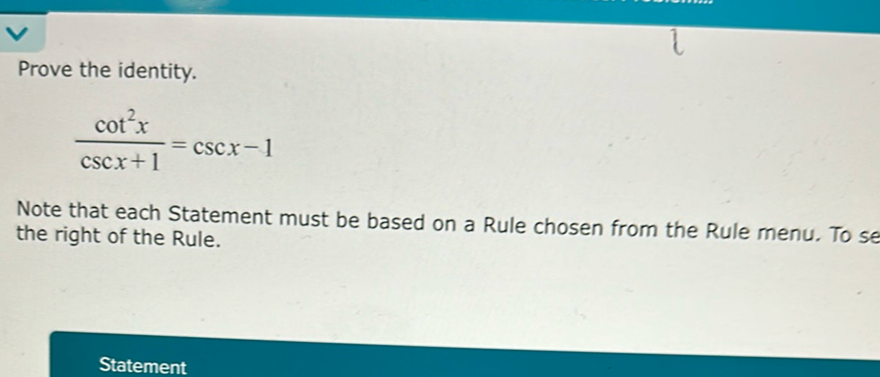Full solution
Q. Prove the identity.Note that each Statement must be based on a Rule chosen from the Rule menu. To se the right of the Rule.Statement
- Start with left-hand side: We start with the left-hand side of the identity and try to transform it into the right-hand side.We have: Recall the trigonometric identities: and
- Rewrite : Rewrite in terms of and : So,
- Rewrite left-hand side: Now, let's rewrite the left-hand side using the in terms of and :
- Multiply by : Multiply both numerator and denominator by to get rid of the fraction in the denominator:
- Simplify expression: Simplify the expression by canceling out a in the numerator and denominator: =
- Use Pythagorean identity: Use the Pythagorean identity: So, Replace in the expression:
- Factor numerator: Factor the numerator as a difference of squares:
- Cancel common factor: Cancel out the common factor in the numerator and denominator:
- Rewrite : Rewrite as :=
- Transform into right-hand side: We have now transformed the left-hand side of the identity into the right-hand side:This completes the proof.
More problems from Power rule
QuestionGet tutor help
QuestionGet tutor help
QuestionGet tutor help
QuestionGet tutor help
QuestionGet tutor help

